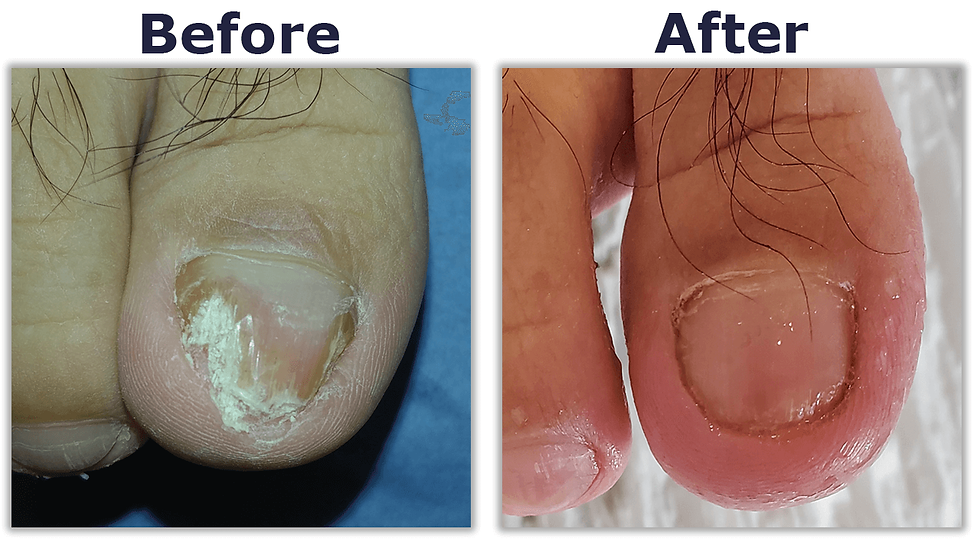Ingrown Nails: Prevention and Treatment Methods
- marionwcyau
- Aug 15, 2024
- 2 min read

The cuticle's basement membranes are vulnerable to bacterial invasion as nails begin to grow in, thus private ingrown toenail surgery in London is required to stop the spread of infection. The nail's edge has to be raised off the bed. If there is a lateral ingrowth, this elevation can be achieved by gently rolling a cotton wisp from the nail's lateral side beneath the nail's edge. It hurts even harder to force the cotton wisp in from the tip. Try soaking the foot in warm water if the nail is too ingrown to be done painlessly. The nail may become sufficiently softer after washing, enabling edge elevation with little discomfort.
Partial Nail Removal and Cauterisation
In 70–90% of instances, partial nail removal combined with nail matrix cauterisation is curative. An alternative would be to use a laser to remove a portion of the nail plate. Nevertheless, using a laser instead of chemical cautery offers minimal to no benefit.
Chemical Cauterisation Technique
One method for chemically cauterising the nail matrix is to use 10% sodium hydroxide or phenol. Acquire informed consent; the doctor should acquire and not assign consent. Give no assurances about a cure or the absence of consequences; outline the dangers of infection, regrowth, and recurrence; and go over the suggested course of action.
Preparing for the Procedure
Apply povidone-iodophor or your preferred skin cleanser to the toe, then drape it and do a digital block at the proximal phalanx or metatarsal head. Inject 1 mL of buffered lidocaine (often without epinephrine, however there is no proof to back up this suggestion) into each digital nerve.
Elevating and Removing the Nail
Roll the nail from the ingrown side towards the toe's midline after elevating the ingrown section with a nail cutter. We make sure the nail's germinal end—which has a delicate, feathery edge—is visible. Usually white, the proximal end is located beneath the cuticle. We cut perpendicular to the nail's end, approximately 1/4 to 1/3 of the nail.
Chemical Application and Final Steps
After the germinal section of the nail is removed, a cotton-tipped applicator soaked in super-saturated phenol or 10% sodium hydroxide should be inserted into the proximal sulcus. After sixty seconds, we wait and then repeat. We rinse with rubbing alcohol, paying specific attention to the sulcus. Use an applicator drenched with alcohol to make sure all of the chemical is removed.
You do not have to go through it all alone. Reach out to us for your private ingrown toenail surgery in London.








Comments